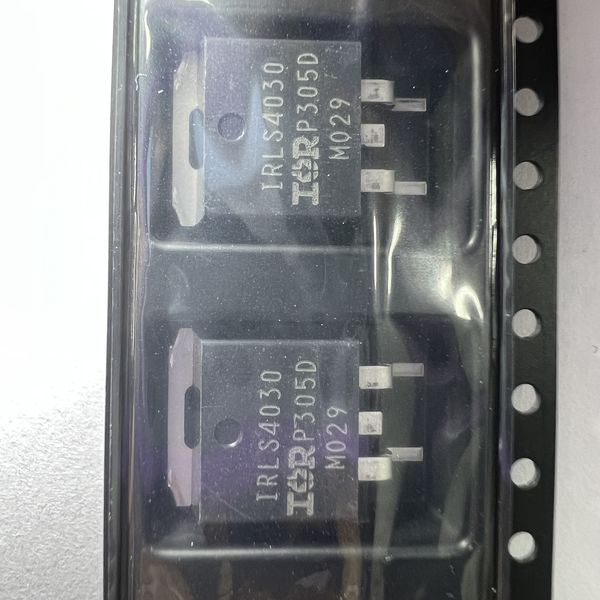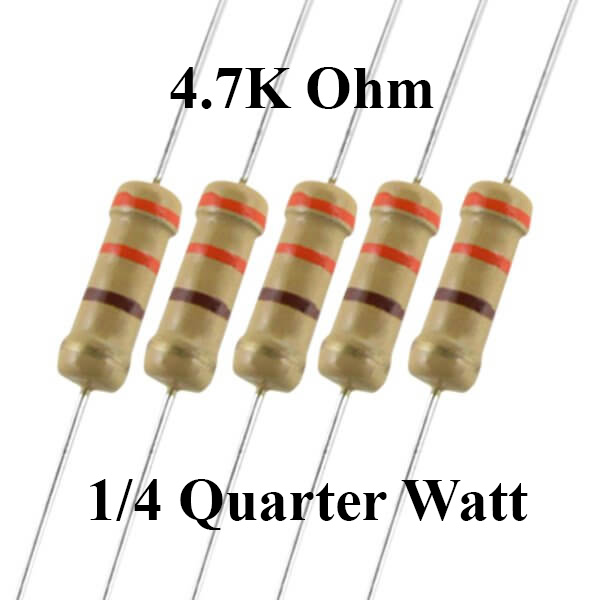A 500 ohm resistor is a type of resistor with a resistance value of 500 ohms. Resistors are passive two-terminal electrical components that resist the flow of electric current. Here are some key points about a 500 ohm resistor:

-
Resistance Value: A 500 ohm resistor restricts the flow of electric current in a circuit. It is designed to provide a specific amount of resistance, measured in ohms, to control the current flow according to Ohm's Law (V = I * R), where V is voltage, I is current, and R is resistance.
-
Tolerance: Like other resistors, a 500 ohm resistor may have a specified tolerance that indicates the maximum allowable deviation from the nominal resistance value. Common tolerance values for resistors include 5%, 1%, and others.
-
Power Rating: The power rating of the resistor specifies the maximum amount of power it can dissipate without getting damaged. The power rating is typically specified in watts and depends on the resistor's construction and material.
-
Color Coding: In through-hole resistors, the resistance value and tolerance are often indicated by colored bands. The color code for a 500 ohm resistor typically includes specific colors representing digits and a tolerance band.
-
Applications: A 500 ohm resistor can be used in various electrical and electronic circuits for purposes such as current limiting, voltage division, signal conditioning, biasing components in circuits, filtering, and other applications where precise resistance values are required.
Overall, a 500 ohm resistor is a standard electronic component that finds application in many types of circuits to control current flow, divide voltages, set biasing conditions, and perform other functions that involve the use of resistors with specific resistance values.

500 Ohm Resistor Feature
A 500-ohm resistor, like any other resistor, possesses specific features that make it a versatile component in electronics. Here are some common features and characteristics of a 500-ohm resistor:
-
Resistance Value: The primary feature of a 500-ohm resistor is its resistance value of 500 ohms, which is the amount of opposition it provides to the flow of electric current passing through it.
-
Tolerance: Resistors have a tolerance rating that indicates the allowable deviation from the specified resistance value. Tolerance values for resistors such as 500-ohm resistors are typically 5%, 1%, or other values, indicating how close the actual resistance can be to the specified value.
-
Power Rating: Another important feature is the power rating of the resistor, which signifies the maximum amount of power the resistor can dissipate without getting damaged. The power rating is specified in watts and depends on the physical size and material of the resistor.
-
Accuracy: Resistors, including 500-ohm resistors, have a level of accuracy that determines how closely the actual resistance aligns with the specified value. Higher accuracy resistors are often needed in precision applications.
-
Temperature Coefficient: The temperature coefficient of a resistor indicates how its resistance changes with temperature variations. It is specified in parts per million per degree Celsius (ppm/°C) and is crucial for stability in different environmental conditions.
-
Construction Type: 500-ohm resistors are available in various construction types, including through-hole resistors, surface-mount resistors, wirewound resistors, and others, each with its own characteristics suited for different applications.
-
Physical Size: The physical size of the resistor can vary based on its power rating and construction. More power-dissipating resistors are typically larger to handle the heat generated.
-
Material: Resistors can be made from different materials, such as carbon film, metal film, wirewound, or thick film, each offering distinct characteristics in terms of accuracy, stability, and power handling capabilities.
-
Applications: 500-ohm resistors find applications in various circuits including voltage dividers, current limiting circuits, signal conditioning, filters, biasing circuits, and measurement circuits where a 500-ohm resistance is required.
Understanding these features helps in selecting the right resistor for a specific application based on factors such as accuracy requirements, power handling capability, temperature stability, and other considerations to ensure optimal performance in the circuit.
500 Ohm Resistor Package
The "package" of a resistor refers to its physical characteristics, such as size, shape, and lead configuration, which can vary depending on the resistor type and construction. Here are the common package types for a 500-ohm resistor:
-
Through-Hole Resistor: Through-hole resistors are the most common type of resistors with radial leads that are inserted into holes on a printed circuit board (PCB). They are available in various sizes, with differing power ratings and tolerances. The package for a through-hole 500-ohm resistor may vary based on its wattage and manufacturer specifications.
-
Surface-Mount Resistor (SMD): Surface-mount resistors are designed for automated assembly and are soldered directly onto the surface of a PCB. SMD resistors come in various packages like 0402, 0603, 0805, etc., indicating their dimensions. The package for a surface-mount 500-ohm resistor will be specified by its dimensions and soldering pad configuration.
-
Axial Resistor: Axial resistors have leads that are attached to either end of a cylindrical resistor body. These are often used in hand-soldered applications and are available in different lengths and diameters.
-
DIP Resistor: Dual in-line package (DIP) resistors are designed for through-hole mounting but are housed in a rectangular package that resembles integrated circuit packages. They are commonly used in applications where space is limited.
-
Network Resistor Package: In some cases, resistors are packaged together in resistor networks. These are multiple resistors housed in a single package, often used in applications requiring precision matching between resistors.
-
Custom Packages: Some specialized resistors may come in custom packages designed for specific applications or to meet certain performance criteria.
The choice of package type depends on factors such as the assembly process, available space on the PCB, power dissipation requirements, and other considerations specific to the circuit design. It's important to select the right package type to ensure proper mounting and functionality within the circuit.

500 Ohm Resistor Color Code
In the standard color code system for resistors, each color corresponds to a specific digit or value, and together they represent the resistance value of the resistor. Here is how the color bands would be arranged for a 500 ohm resistor in the color code system:
- First Band (Digit 1 - Hundreds): Green
- Second Band (Digit 2 - Tens): Black
- Third Band (Digit 3 - Units): Brown
- Fourth Band (Multiplier - Ohms): No band or color (indicating "x1")
- Fifth Band (Tolerance): Gold
Therefore, for a 500 ohm resistor:
- Green: 5 (representing hundreds)
- Black: 0 (representing tens)
- Brown: 0 (representing units)
- No band or color for the multiplier (indicating "x1")
- Gold: Tolerance of +/- 5%
This color code configuration indicates that a resistor with green, black, brown color bands, and a gold tolerance band would have a resistance value of 500 ohms with a tolerance of +/- 5%.
500 Ohm Resistor Uses
A 500-ohm resistor, like any other resistor, has various applications in electronics and electrical circuits. Here are some common uses of a 500-ohm resistor:
-
Voltage Divider: In combination with another resistor, a 500-ohm resistor can be used to create a voltage divider circuit. This is useful for obtaining a fraction of an input voltage based on the resistance ratio of the resistors.
-
LED Current Limiting: 500-ohm resistors are often used in series with LEDs to limit the current flow through the LED and prevent it from burning out due to excessive current.
-
Biasing Circuits: Resistors are commonly used in biasing circuits for amplifiers and other electronic components to establish the operating point of the circuit.
-
Pull-Up or Pull-Down Resistors: In digital electronics, 500-ohm resistors can act as pull-up or pull-down resistors to ensure a stable state of a signal line when no active device is driving the line.
-
Signal Conditioning: Resistors are essential for conditioning signals in various electronic circuits, like filtering noise, matching impedances, and setting gain levels.
-
Current Limiting: They can be used to limit the current in specific parts of a circuit to protect components from damage.
-
Voltage Clamping: By combining a resistor with a diode, they can be used in voltage clamping circuits to limit the output voltage level.
-
Oscillator Circuits: Resistors are used in oscillator circuits to set the frequency of oscillation and maintain the stability of the circuit.
-
Filter Circuits: In conjunction with capacitors and inductors, resistors are used to create various types of filter circuits like low-pass, high-pass, band-pass, and band-stop filters.
-
Temperature Sensors: When used in conjunction with a temperature sensor, a 500-ohm resistor can help in creating a simple temperature sensing circuit.
These are just a few examples of the many applications of a 500-ohm resistor in electronics. The versatility and wide usage of resistors in circuit design make them fundamental components in nearly all electronic devices and systems.
500 Ohm Resistor Price
The price of a 500 ohm resistor depends on several factors, including the type of resistor (through-hole or surface mount), power rating, tolerance, package quantity, and supplier.
In general, a common size through-hole 500 ohm resistor (e.g., 1/4 watt power rating and ±5% tolerance) may cost a few cents when purchased in bulk. Surface mount resistors may be cheaper per unit, again depending on the exact specification and quantity purchased.
For retail quantities (e.g., single pieces or small packages), the price per resistor will be higher. For example, you might pay $0.10 to $0.50 per resistor, or even more for specialized types, such as precision or high-power resistors.
Different Watt Types of 500 Ohm Resistor
Resistors are available in various power ratings to suit different applications where power dissipation is a concern. The power rating of a resistor indicates the maximum amount of power it can dissipate without being damaged. For a 500-ohm resistor, here are the typical wattage options available:
-
1/8 Watt Resistor: A 1/8 watt resistor is suitable for low-power applications where only a small amount of power needs to be dissipated. These resistors are typically small in size and are commonly used in signal and control circuits.
-
1/4 Watt Resistor: A 1/4 watt resistor is a common and versatile choice for various general-purpose applications. These resistors can handle slightly higher power dissipation compared to 1/8 watt resistors and are widely used in a wide range of electronic circuits.
-
1/2 Watt Resistor: A 1/2 watt resistor is suitable for applications that require higher power dissipation capacity than 1/4 watt resistors. These resistors can handle more power without overheating and are used in circuits where moderate levels of power are dissipated.
-
1 Watt Resistor: A 1 watt resistor is used in circuits where higher power dissipation capability is required. These resistors can handle even more power and are suitable for applications such as power supplies, amplifiers, and other circuits where higher power levels are involved.
-
2 Watt Resistor: A 2 watt resistor is even more capable in dissipating power and is commonly used in circuits where significant amounts of power need to be dissipated without being damaged.
-
Higher Wattage Resistor: For applications requiring even higher power handling capabilities, resistors with wattages greater than 2 watts are available. These resistors are used in power electronics, high-power amplifiers, and other applications with demanding power dissipation requirements.
When choosing a resistor for a specific application, it is important to select a resistor with the appropriate wattage rating to ensure that it can handle the power dissipation requirements of the circuit without overheating or being damaged.


